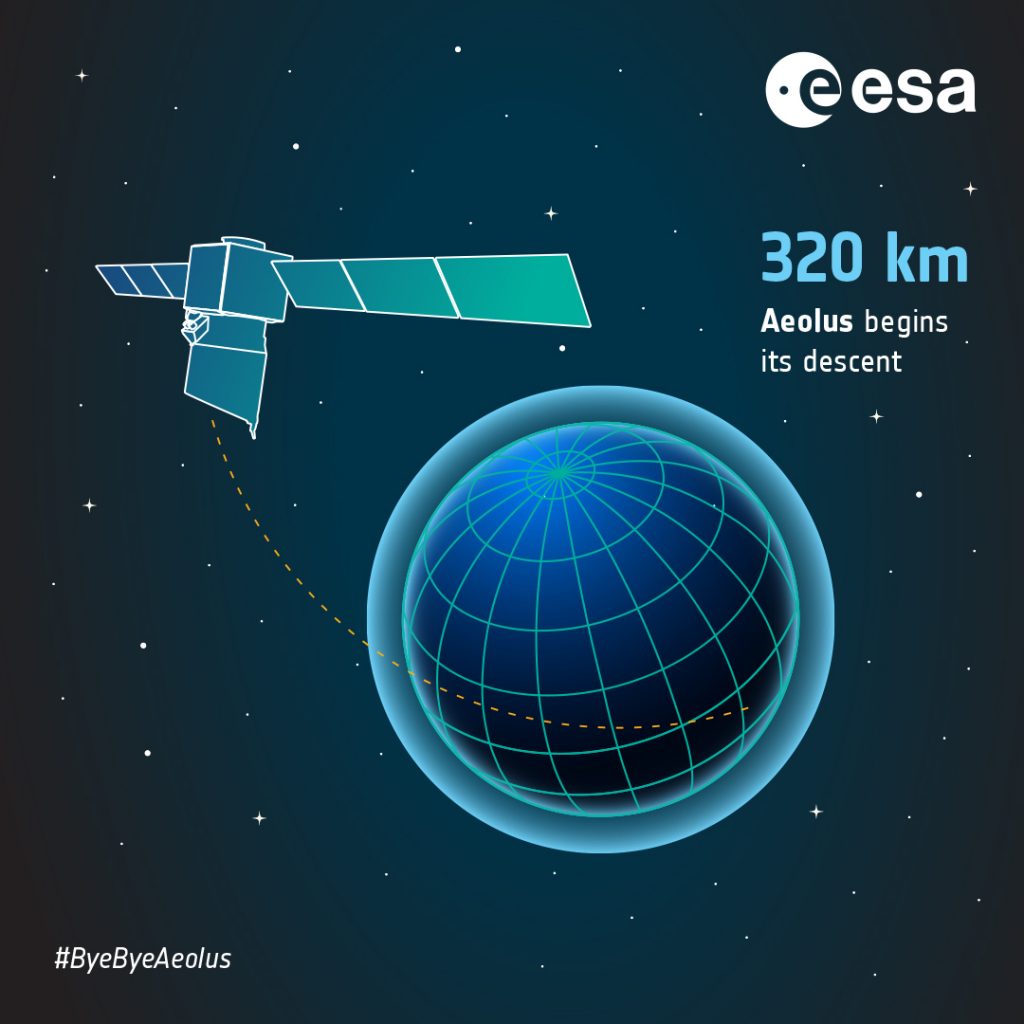The countdown is truly on now for Aeolus as it begins its journey home.
This week marks a significant milestone in the reentry process. End-of-life tests have ended. Aeolus will now start to naturally descend as Earth’s atmosphere and gravity combine to drag the satellite down from an altitude of 320 km to 280 km.

How long this takes will depend on several factors, including solar activity, which has been ramping up in recent months.
It was increasing doses of space weather, along with fuel finally running out after Aeolus long outlived its predicted lifetime, that meant we had to bring things to an end.
It really has been like running against the wind.

What happens next?
For now, we wait.
Our operations team will be keeping tabs on Aeolus’ altitude, and the status of the satellite, which will determine whether we may proceed to the next stage of the reentry.
As we mentioned in the last blog, this is a first of its kind attempt that might not work. In the case we need to abort, Aeolus will continue its uncontrolled descent as originally planned.
In the meantime, over the coming weeks, we’ll reveal more about the hard work and complex science that goes into planning and attempting a unique end for a pioneering mission.
Stay tuned as we catch up with some of the key people in the Aeolus team, and hear first hand about what it takes to fly – and finally bring home – the keeper of the winds.

Discussion: one comment
Kudos to you for this important, ground-breaking work!